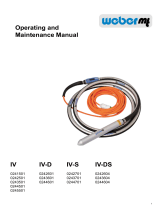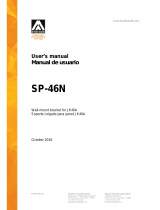
Table of Contents
5000212651IVZ.fm 3
1 Preface ....................................................................................................................................5
2 Introduction ............................................................................................................................6
2.1 Using the manual......................................................................................................................... 6
2.2 Storage location of the manual.................................................................................................... 6
2.3 Accident prevention regulations................................................................................................... 6
2.4 More information.......................................................................................................................... 6
2.5 Target group................................................................................................................................ 6
2.6 Explanation of symbols................................................................................................................ 6
2.7 Wacker Neuson Contact partner ................................................................................................. 7
2.8 Disclaimer.................................................................................................................................... 7
2.9 Product identification of the machine........................................................................................... 7
3 Security ..................................................................................................................................8
3.1 Policy........................................................................................................................................... 8
3.2 Areas of responsibility of the operator......................................................................................... 8
3.3 Operator responsibilities.............................................................................................................. 8
3.4 Personnel qualification................................................................................................................. 9
3.5 General sources of danger.......................................................................................................... 9
3.6 General safety instructions.......................................................................................................... 9
3.7 Electrical safety.......................................................................................................................... 10
3.8 Specific safety instructions – Internal vibrators.......................................................................... 10
3.9 Maintenance.............................................................................................................................. 11
3.10 Personal Protective Equipment ................................................................................................. 11
3.11 Safety devices ........................................................................................................................... 12
3.12 Behavior in dangerous situations............................................................................................... 12
4 General Power Tool Safety Warnings ................................................................................13
5 Safety and information labels ............................................................................................15
6 Setup and function ..............................................................................................................16
6.1 Standard package ..................................................................................................................... 16
6.2 Application areas....................................................................................................................... 16
6.3 Short description........................................................................................................................ 16
7 Components and operator's controls ................................................................................17
8 Transport ..............................................................................................................................18
8.1 Loading and transport................................................................................................................ 18
9 Operation and use ...............................................................................................................19
9.1 Before commissioning ............................................................................................................... 19
9.2 Commissioning.......................................................................................................................... 19
9.3 Operation................................................................................................................................... 20
9.4 Decommissioning ...................................................................................................................... 21
9.5 After operation........................................................................................................................... 21
10 Maintenance .........................................................................................................................22
10.1 Maintenance schedule............................................................................................................... 22
10.2 Maintenance jobs....................................................................................................................... 22
11 Faults ....................................................................................................................................24
11.1 Troubleshooting table - Inverter................................................................................................. 24
11.2 Troubleshooting Table - Bodyguard
® ................................................................................................................ 24
12 Disposal ................................................................................................................................25
12.1 Disposal of old electrical and electronic equipment................................................................... 25
Inhalt

























